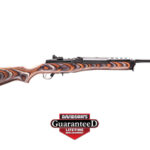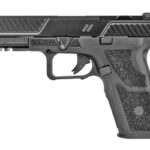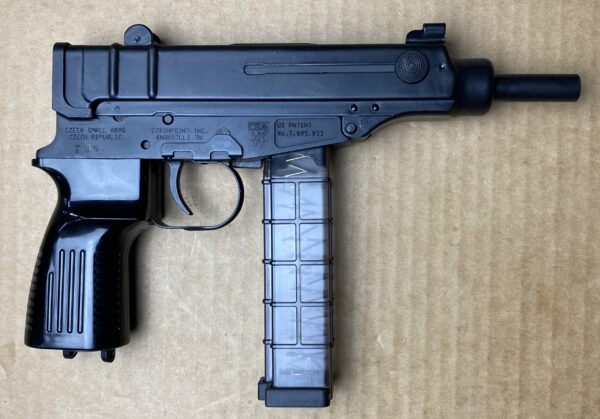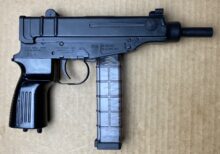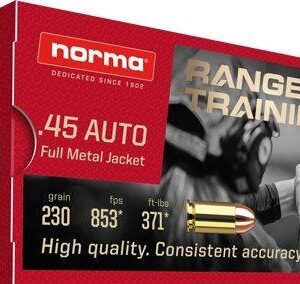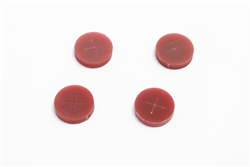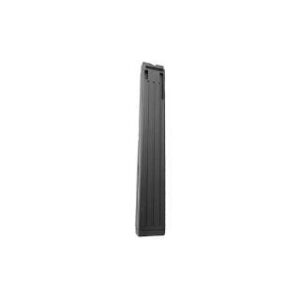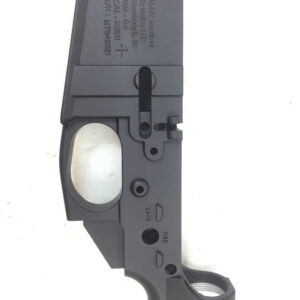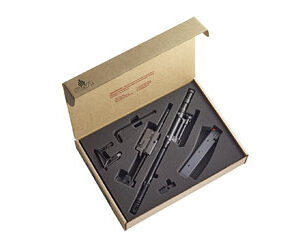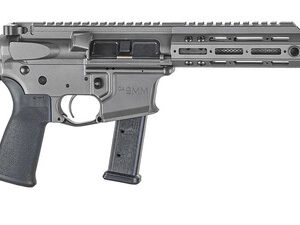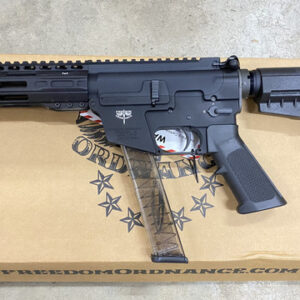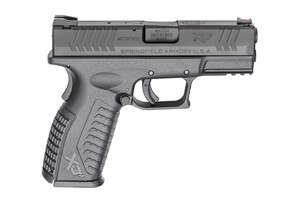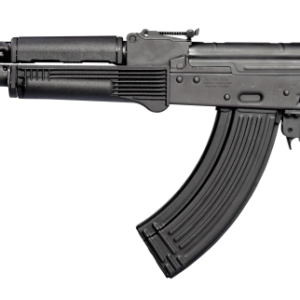Description
It may not be a familiar name to the general public, but the Czech-produced korpion vz.61 is probably no stranger to fanciers of films dealing with crime, intrigue, espionage and terrorism.
You know the scene in which someone on one side or the otheror bothdraws an automatic weapon the size of a large pistol and starts spraying the room with lead? The compact weapon might be an Uzi or it might be an Ingram
but its equally likely to be a korpion.
Miroslav Rybá? (1924-1970) originally had security forces in mind when he conceived of the little weapon in 1959, but it was readily accepted by the Czechoslovakian army for use by low-ranking staff, vehicle crewmen and special forces.
It entered production in 1961 by the ?esko zbrojovka arms factory in Uherský Brod as the Samopal vzor 61 (submachine gun 61), although posterity has since questioned the little weapons official status: submachine gun or machine pistol?
The korpion is a hammer-fired, straight-blowback-operated weapon with a lightweight, telescoping bolt assembly that wraps around much of the barrel, accounting for the guns overall compactness. It fires from the closed bolt position, which helps it more accurate than a comparable open-bolt weapon.
That is further helped by the low recoil impulse of its 7.62x17SR Browning Short cartridge, which when fired is driven back by the blowback gases and the inertia of the bolt against two recoil springs, to be ejected vertically upward through a port in the receiver housing top cover.
The korpions iron sights include a mechanically adjustable post in front and a flip rear sight with notches for 75 and 150 meters. A wire stock folds forward over the receiver to lock on the front sights protection capture. Although the korpion can fire reasonably accurate short bursts when held in two hands, anyone with a musculature falling below that of Arnold Schwarzenegger would be well advised to flip the shoulder stock back when firing fully automatic.
A total of 200,000 korpions were produced by the Czechoslovakians between 1961 and 1979. A strictly semiautomatic civilian version, the vz.61S, could be had to fire 7.62mm or 9mm rounds (the latter carried in straight, rather than curved magazines). In addition, Yugoslavia license-produced the sv.61 from 1984 to 1992 as the M84, with a plastic pistol grip in place of the wooden one used on the Czech original.
A strictly semiautomatic civilian version, the M84A, was bored to use either the 7.62mm or a 9x17mm short round. After the breakup in Yugoslavia, production continued in Serbia.
korpions have seen use in the armies or security forces of more than 20 countries throughout the world. During the Vietnam War some turned up in the hands of North Vietnamese and Viet Cong. Others saw use in civil conflicts in Lebanon, Peru, Liberia and Yugoslavia.
